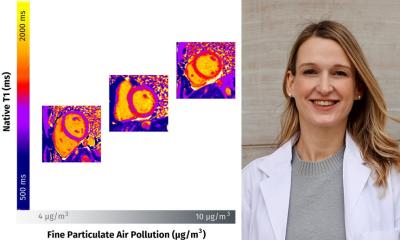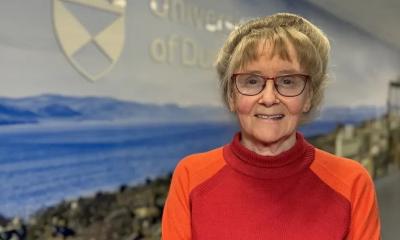Article • The MR-INFORM trial
Seeking a first-line ischaemia test
Findings from a comparative outcome study have highlighted the benefits of using cardiovascular magnetic resonance imaging (CMR) perfusion imaging as a first-line ischaemia test in patients with moderate risk of coronary artery disease (CAD).
Report: Mark Nicholls
The MR-INFORM (Magnetic Resonance Perfusion or Fractional Flow Reserve in Coronary Disease) trial, which began in 2012 (results published in the New England Journal of Medicine), was an international, prospective, multi-centre randomised controlled trial designed to test the hypothesis that initial non-invasive management of patients with stable angina and an intermediate to high risk of CAD is non-inferior to invasive angiography and FFR (fractional flow reserve) to guide revascularisation.

Dr Shazia Hussain, who led key elements of the MR-INFORM trial, said the research aimed ‘to achieve increased confidence in the use of CMR perfusion imaging as a first-line investigation in patients with stable CAD’. In patients with stable angina, different strategies are often used to guide revascularisation: this trial aimed to test myocardial-perfusion cardiovascular magnetic resonance imaging (CMR) against invasive angiography and measurement of FFR.
Hussain, who is a Consultant Interventional Cardiologist at Glenfield Hospital in Leicester, outlined the background and design of the MR-INFORM trial at the British Cardiovascular Society (BCS) conference in Manchester in June, and, in particular, the use of ischaemia testing to assess the haemodynamic relevance of an intermediate grade stenosis.
The study team performed an international, multi-centre randomised controlled trial, by assigning 918 patients with typical angina and either two or more cardiovascular risk factors, or a positive exercise treadmill test, to a cardiovascular MRI-based strategy, or an FFR-based strategy. Revascularisation was recommended for patients in the cardiovascular-MRI group with ischaemia in at least 6% of the myocardium or, in the FFR group, with an FFR of 0.8 or less.
Recommended article

Article • Going nuclear
Ischaemia: Advances in nuclear imaging
Experts outlined approaches to ischaemia imaging during the recent British Cardiovascular Society conference. In a ‘Detection of ischaemia by cardiac imaging in 2018’ session, comparisons were made between solid state SPECT cameras, whether spatial resolution or visual assessment was of the greater importance, if CT-FFR offered advantages over CT perfusion, and the challenges in defining a…

Among patients with stable angina and risk factors for CAD, myocardial-perfusion cardiovascular MRI was associated with a lower incidence of coronary revascularisation than FFR and was non-inferior to FFR with respect to major adverse cardiac events.
Detailed findings show that, in patients with stable angina and risk factors for CAD, CMR in guiding initial patient management was non-inferior to the use of FFR on the primary outcome of MACE at one year; the use of CMR resulted in less invasive coronary angiography and coronary revascularisation; only 48% of the CMR group underwent invasive angiography (versus 97% of the FFR group); furthermore, 36% of patients in the CMR group versus 45% in the FFR group underwent revascularisation.
High resolution and non-invasive imaging
In patients with moderate pre-test probability of CAD, it is safe to use CMR perfusion imaging as a first line test for ischaemia testing and to guide revascularisation strategy
Shazia Hussain
‘Both stress perfusion CMR and FFR are tests for ischaemia which, when used to guide revascularisation, are superior to using angiographic severity alone,’ Hussain said. CMR perfusion imaging provides high resolution imaging and is non-invasive, therefore of lower risk than FFR testing, done during invasive coronary angiography.
‘The final results demonstrate non-inferiority of CMR perfusion imaging to guide revascularisation when compared to an invasive strategy with FFR. This should increase confidence in using CMR perfusion imaging as a first-line ischaemia test in patients with moderate risk of CAD, and could potentially also result in reduced revascularisation procedures.’
The study took place across 16 international centres – the majority in the UK along with units in Germany, Portugal and Australia. The key take home message for BCS conference delegates, she advised: ‘In patients with moderate pre-test probability of CAD, it is safe to use CMR perfusion imaging as a first-line test for ischaemia testing and to guide revascularisation strategy.’
Profile:
Shazia Hussain is a Consultant Interventional Cardiologist at Glenfield Hospital, Leicester. She trained at Papworth Hospital, Cambridge, and was awarded the competitive BCIS interventional fellowship to gain experience in complex angioplasty at Toronto General Hospital, Canada. Hussain also underwent CMR training while undertaking her PhD at King’s College London.
31.08.2019











